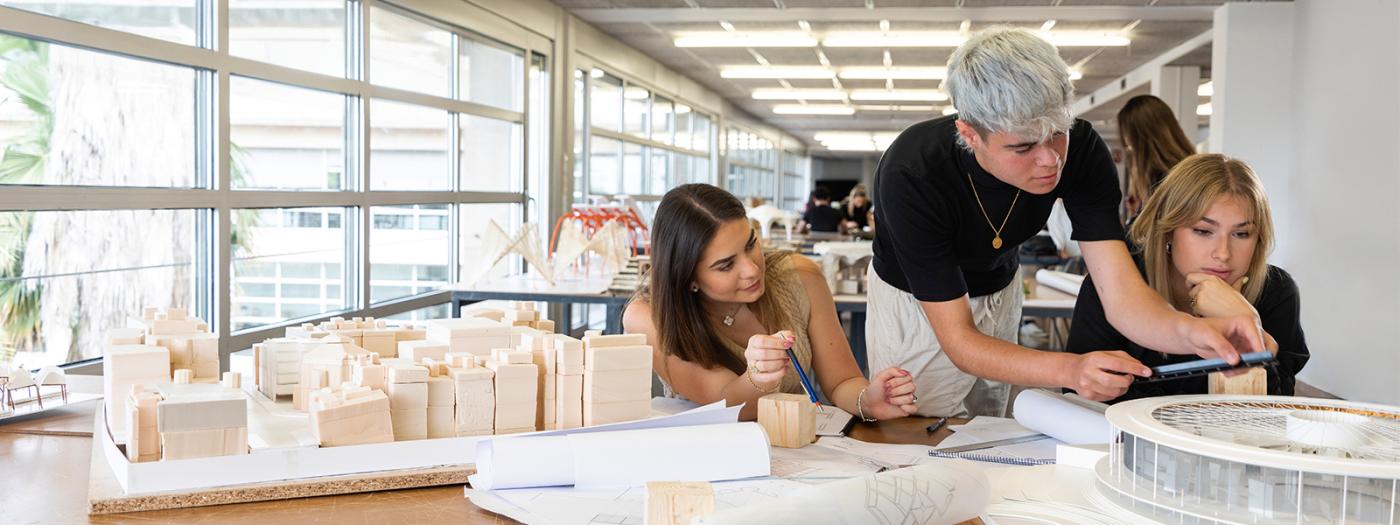The student must acquire an analytical and critical vision of the problems to be solved in our profession. They must know how to structure a real solution and transform it into a graphic and written document in a clear and concise manner:
Analysis and reflection.
Aptitude, ability and capacity
- To analyze morphologies and architectural typologies that will provide tools to solve the architectural exercise.
- Research, to develop new strategies and generate new ideas.
- For critical debate. To order and question important issues of the project, implementation, program, etc.
Architectural project
To understand, define and develop
- A program of needs to be applied to an architectural project.
- The integration of the project in the site and its territorial relationship.
- The relationship between the human scale, the environment and the buildings.
- Natural light and its impact on the project.
- An architectural project that satisfies aesthetic and technical requirements.
Didactic practice (Interconnection. Horizontal workshop)
Understand
- The technical-constructive, energetic, sustainability, materiality and structural morphology concepts; as well as the aesthetic requirements.
- The processes of architectural project development, with a collaborative, multidisciplinary attitude with other areas and/or degrees.
Representation
Understand and apply
- The knowledge of architectural representation necessary for the specific project development and its correct understanding.
- Knowledge of different systems of representation of the project through photography, video, collage, models, 3D, etc.
- The relation of scales. Each document has its scale, and that it does not explain the same thing.
Knowledge acquired
Learn
- To draw by hand.
- To draw everything necessary to understand the project.
- The relation of scales. Each element has its scale
Understand
- We learn more from mistakes than from casual successes or inspiration.
- Designing is a constant work, with a self-critical sense, in which there is a constant search for the best way to solve the problem.
- The student's work, outside the teacher's classroom hours, is essential to improve the result.
- They must be able to work autonomously.
- They must be able to meet new challenges, such as the ability to incorporate new solutions and work methodologies.
This course pursues the development of the project, going from understanding and analyzing the territory on a large scale, to approach the site selected for the project, which the student will develop to the visible space, but always aware of the territory in which it is inserted, "the construction of the landscape".
The student will delve into different building typologies: public building or equipment, private non-residential building, etc. in the city or in the territory: he will delve into the function and its character, its historical weight, the program and the place, to represent and to be; to become aware of the structuring systems for the formal unit: measure and scale, public versus private, shared, community, culture and life.
In short, the construction of the project from conception to representation.
Problems and exercices
Laboratory practices
Seminar
Self-Paced Learning
Project-based learning
Flipped Classroom
Gamification Ludification
Peer Instruction
Real events
Challenges-based learing
Case method
Master class
Exams
Internal / external reports
Exercices, problems, internships
Projects
Group / individual presentations
Self-assessment
Class participation / monitoring
Project corrections: tutorials
Jury corrections
